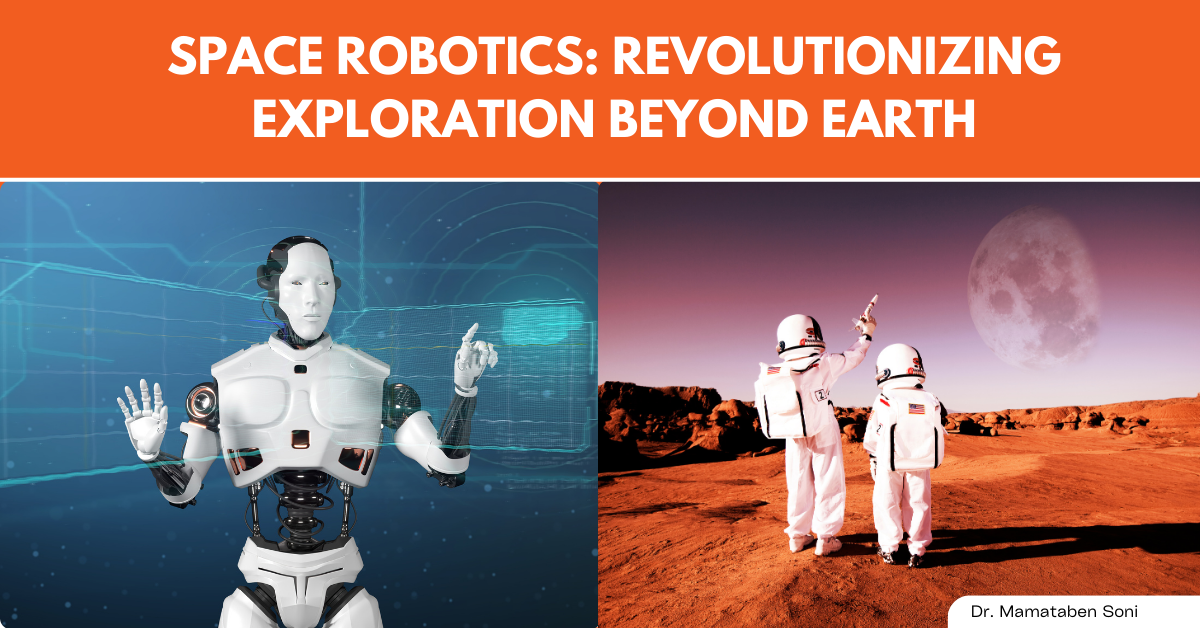Associate Professor of Physics FOBAS
Robotics is an engineering discipline that deals with the conception, design, construction, and operation of robots. Electronics, computer science, artificial intelligence, mechatronics, nanotechnology, and bioengineering all overlap in this field. Robots are machines that may be used to do tasks. Some robots can perform tasks on their own, while others require constant supervision.
Robots have numerous applications in space. Spacecraft that explore distant worlds, such as the moon or Mars, are robots and fall under the category of “Planetary Robotics.” Orbiters, Landers, and rovers are used to explore distant planets and asteroids. Another example is “Orbital robotics”, which supports orbital service and maintenance chores. These operations include the space station’s robotic arm, which aids in the construction of the station. On spacewalks, the robotic arms have fitted new parts to the space station and moved humans around. Furthermore, the space station’s arm can move to other portions of the station; it slides along the outside of the station like an inchworm, attaching at one end at a time.
- Planetary Exploration Track
Current planetary missions use robotic vehicles to accomplish exploration goals and/or conduct scientific research targeted by the related exploration missions. Even though these are already exceedingly demanding and ambitious technology missions, the worldwide scientific objectives of these missions remain rather modest in comparison to the scientific community’s expectations: The exploration areas are quite easy to reach, the local scientific goals are relatively close to the landing site, the daily distances traversed remain relatively small (usually a few tens of meters), the mission duration rarely exceeds 6 months.
Future planetary missions are likely to try to go a step farther in any of these categories, necessitating the availability of more mature systems to assist these missions in gaining autonomy and performance in terms of scientific return.
The scheme below depicts a typical rover planetary mission aimed at reaching the area of interest, performing in-situ scientific investigation, collecting samples and storing them in a bio-container, and transferring them across planetary assets, ready to be returned to Earth.
Figure1.1.The required space robotics capabilities are discussed in greater detail below (referred to as the blue box in the above concept).
2.Vision based Autonomous Navigation (Map building & merging and self-localization)
This feature is critical in the context of planetary exploration due to the rarity of communication links, and it is even more critical for missions like MSR, where accuracy of localization is critical. In the case of vision-based navigation, the surface vehicle relies on data fusion from its on-board sensor set, which includes cameras/stereo-benches: the extraction of some visual features from the acquired images can be used to improve the vehicle’s relative position / orientation determination (with respect to its landing position or operational goals) and/or absolute position on the planet. The 3D environment reconstruction is an additional output that the on-board visual sensor bench may supply for the benefit of opportunistic science and on-board autonomy, which are dedicated to wisely and efficiently scheduling the on-the-surface vehicle activities.
- Autonomy & Locomotion in harsh environment
Future missions envision extremely complicated and articulated on-ground activities, which might be carried out in challenging settings like as shadowed craters, steeply sloping and irregular terrain low gravity bodies for advanced exploration.
Furthermore, selecting the most convenient region for science/detailed exploration/modules and plant settlement/sample collecting can only be performed after extensive reconnaissance. Exploring vast surface regions swiftly and efficiently may necessitate vehicles that are better suited to exploring huge areas than 2D surface robots. Different surface vehicle types could be coupled based on the exploration area scale and the exploration velocity and area revisiting needs.
Those scenarios ask for capabilities which can be categorized into:
- Advanced on board autonomy: A decision-making ability on board the vehicle is critical for being reactive and dealing with environmental uncertainties for the purpose of the vehicle and the mission, as well as smartly scheduling on-site operations in accordance with the best on board restricted resource utilization. Declarative and reactive reasoning processes are planned for implementation, which will allow for more effective FDIR management in a timely manner. When a multi-vehicle scenario is supporting the mission for on-ground research and service operations, on-board autonomy is also critical to robustly and timely manage the diverse vehicles coordination in accomplishing their distributed jobs harmoniously.
- Advanced Locomotion: To ensure the robust evolution of on-ground operations and to improve science feasibility, the ability to move safely on the surface, regardless of its configuration, is required; very harsh environments such as craters, caves, and highly sloped regions, which are typically scientifically very important, can be reached. Advanced locomotion solutions include adaptable and flexible wheels, legs, tethered systems, rolling elements, and bladed wheels.
- Long range mobility including Surface robots capable of sustaining and adapting to long-distance transfers are supported by aerial vehicles such as balloons, airplanes, and helicopters. Aerial vehicles and advanced surface robots both require extended endurance/high energetic efficiency, new materials for mechanisms and actuators, and the fusion of many sensors to precisely perceive the environment for navigation, control, and decision making. To access tough environments such as steep slopes and crowded terrains, advanced surface robots must employ different locomotion concepts based on legs and/or poly-articulated wheels (such as configurable robots or robot teams with complementing skills).
- Advanced sensing: Shadowed/dark parts (such as craters and tunnels) and very dusty regions (such as Mars and Moon surfaces) are examples of harsh and unknown planetary habitats. Sensor kits capable of supporting robotic exploration in these difficult conditions are required.
- Energy Efficiency: The most difficult criterion for surface exploration robotics is energy availability, both in terms of quantity and duration. New and more efficient energy generators, as well as multi-functional systems capable of storing and recovering energy losses, are required. These technological advancements are critical for alleviating the severe limits imposed by on-board power supply on exploration of extremely challenging places (e.g., cold traps, dark regions). Smart materials, which may change their structure due to changeable factors, may provide a viable solution for reducing the power demand from the on-board mechanism and solving some of the actuation chores on board in a new way.

